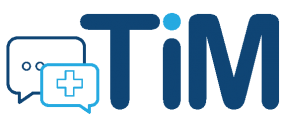At a glance
- Find answers to Frequently Asked Questions (FAQs) about the Text Illness Monitoring system
- Gain insight into the platform's features, functionality , and data privacy measures

Access
State, Tribal, Local, and Territorial public health authorities may request access to TIM by completing the Contact Us form.
Yes, Local jurisdictions can use TIM for infectious disease outbreak symptom monitoring and messaging.
Public health administrators at the State, Tribal, or Territorial level can access all data within their jurisdiction, including local data. CDC does not have access to participant data.
Dashboards, Notifications, and Enrollment
The TIM platform includes a dashboard with multiple visualizations, including detailed and summary information on monitored individuals and alerts. For alerts, jurisdictions can view the name, mobile phone number, and text message content associated with the alert.
TIM creates an alert when an enrolled participant:
- Responds with a text that they have symptoms
- Does not respond to the daily message after a reminder
- Sends a text message to opt out
Administrators may log in to view alerts for participants. Each organization may also set up users to receive alert notifications via email.
There are several reports and data extracts available in TIM.
- Campaign Report: Graphics on status and alerts
- Participant Report: Text responses and alerts over a specified time
- Participant extract: Information on all enrolled participants
- Responses extract: Participant responses and time stamps over time
- Alerts extract: Information on alert records generated
TIM includes a dashboard with summary information about participants, texting campaigns, and alerts displayed as graphs and tables. The data in these graphs and tables can be exported as a CSV file.
The only information required to enroll a participant in TIM is a mobile phone number. Participants may also enter their name.
Messaging
Organizations using TIM can personalize the text message workflow template available in the system. After adding a mobile phone number, the participant will immediately receive a welcome message notifying them of their enrollment.
Participants will receive a daily message asking whether they have symptoms consistent with the identified infectious disease outbreak. Then they will be prompted to reply, 'Yes' or 'No'. If a participant does not respond to the daily message, the TIM system will send a reminder.
Once monitoring is complete, participants will receive a final message that they have completed monitoring and will be unenrolled from TIM.

Key Feature: Personalization allows admin users to customize each question within a survey flow for their campaign's template. Survey frequency can be set for 14- or 21-days of monitoring.
Yes, there is flexibility to edit the text messages in the template. This can include the signs and symptoms listed and other messages to meet the needs of the population being monitored. Users can also change the monitoring period for the participants.
Infrastructure
TIM stores limited personally identifiable information (PII), such as the participant's phone number, name, remaining monitoring period, and text message responses. Administrators can also add notes to participant alerts.
TIM follows standard Security Development Lifecycle (SDL) principles and Amazon Web Services (AWS) standards to protect customer data. The platform is hosted in AWS cloud centers and connections between users and data centers are encrypted with Transport Layer Security. Unauthorized traffic to and within AWS datacenters is blocked and the infrastructure is regularly maintained and tested for security. Separate agency profiles in TIM maintain monitoring campaigns for PII. This is stored as long as required and can be deleted at any time.
For more information, please contact us at timsupport@cdc.gov.
